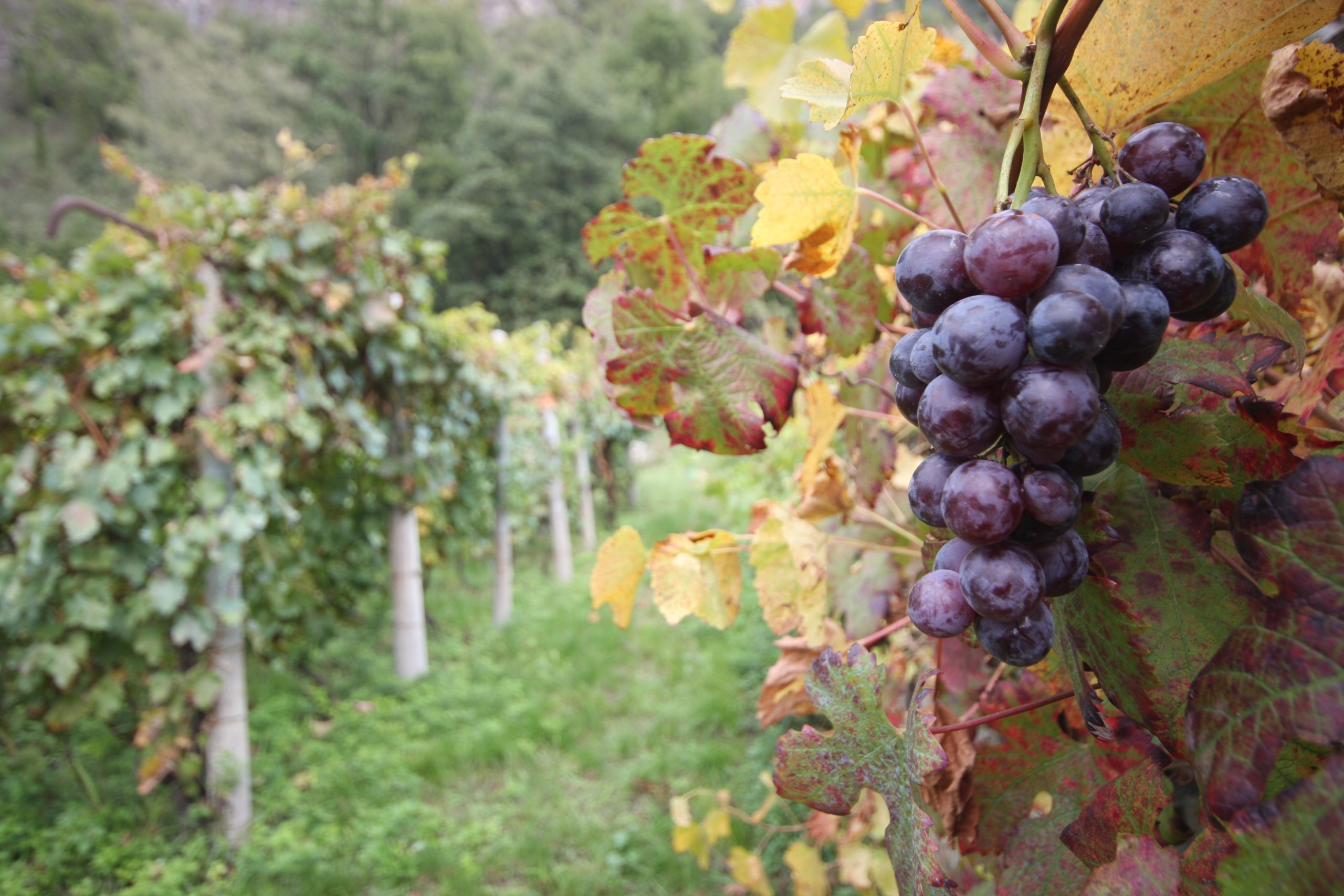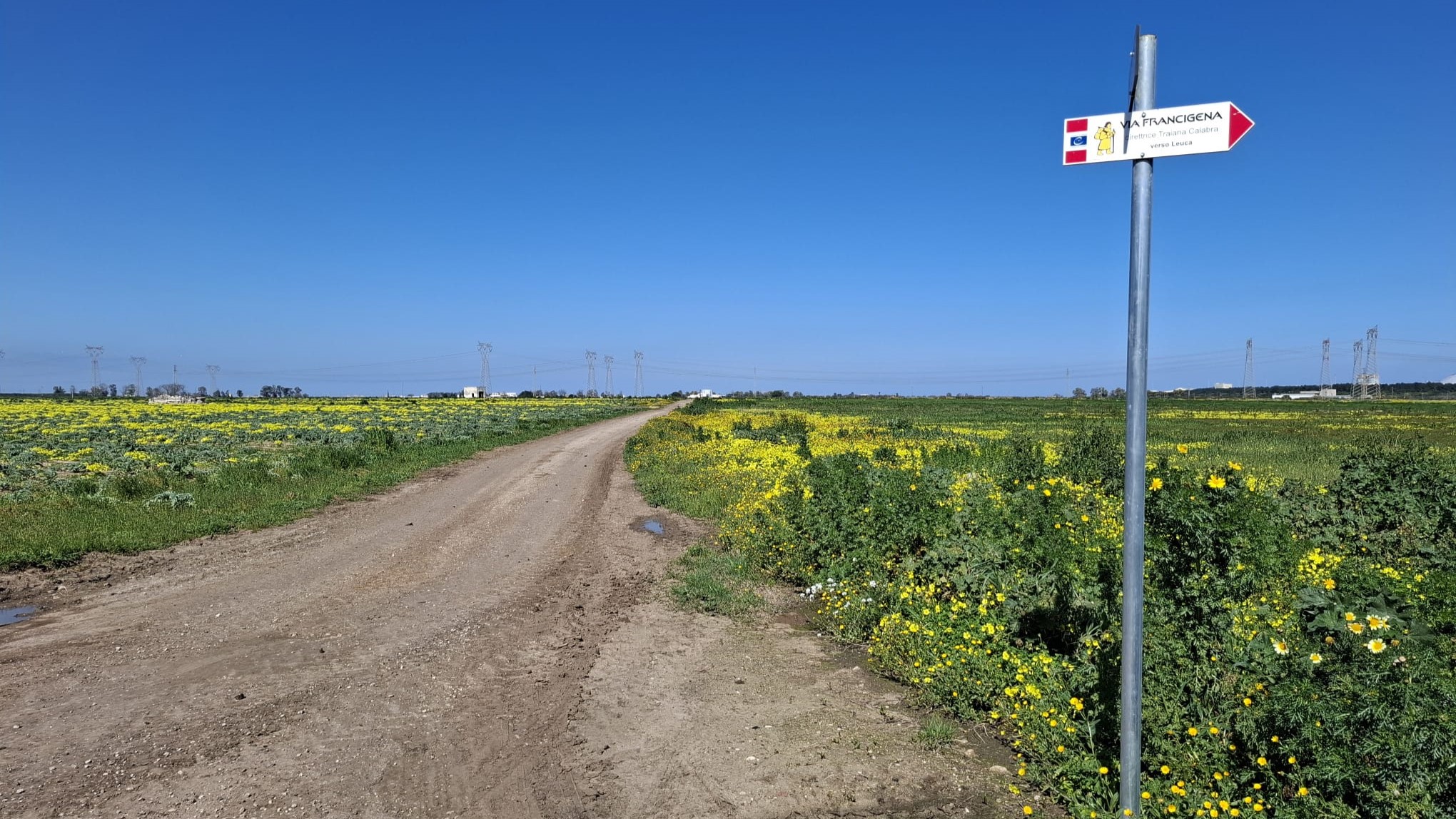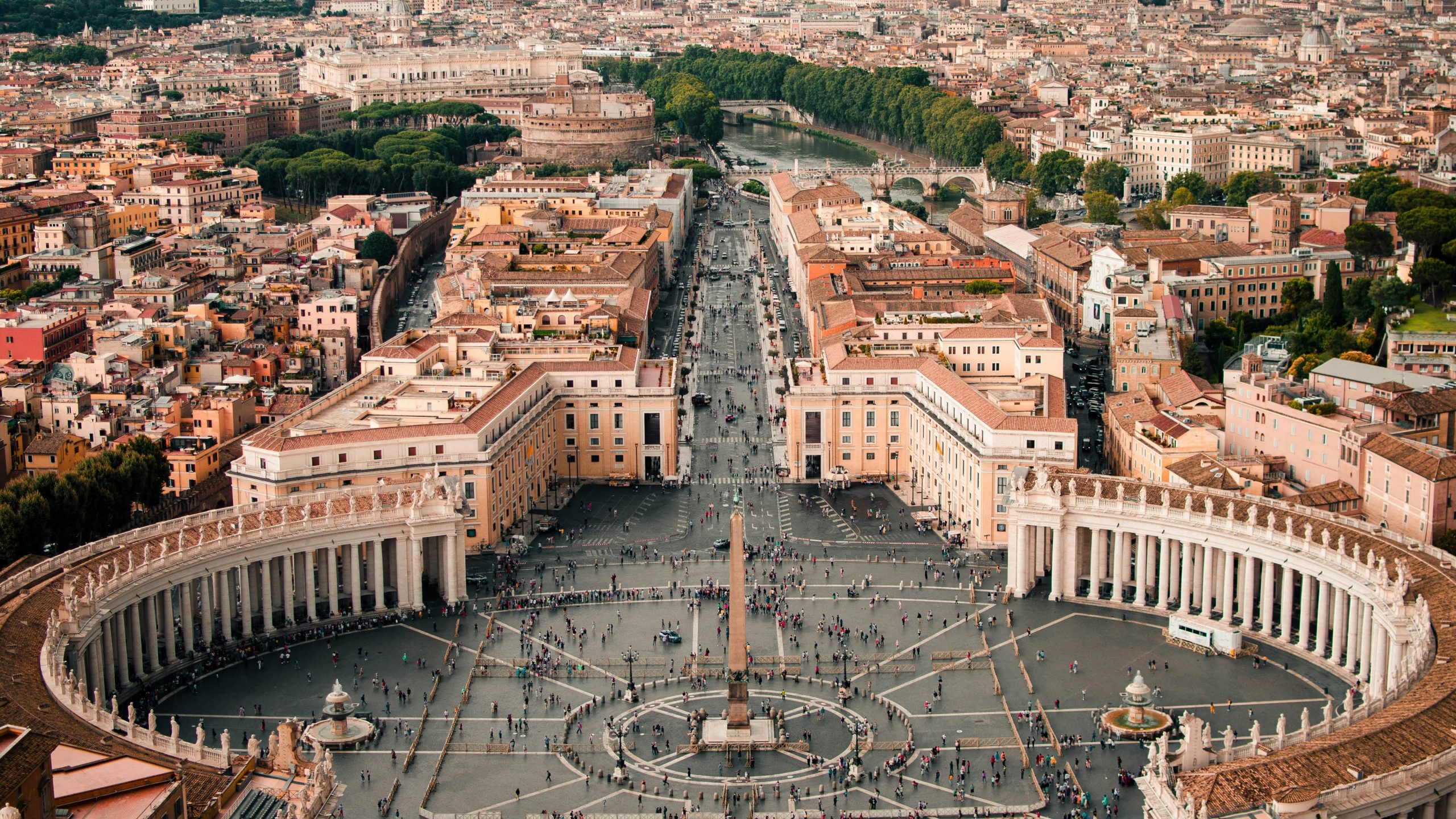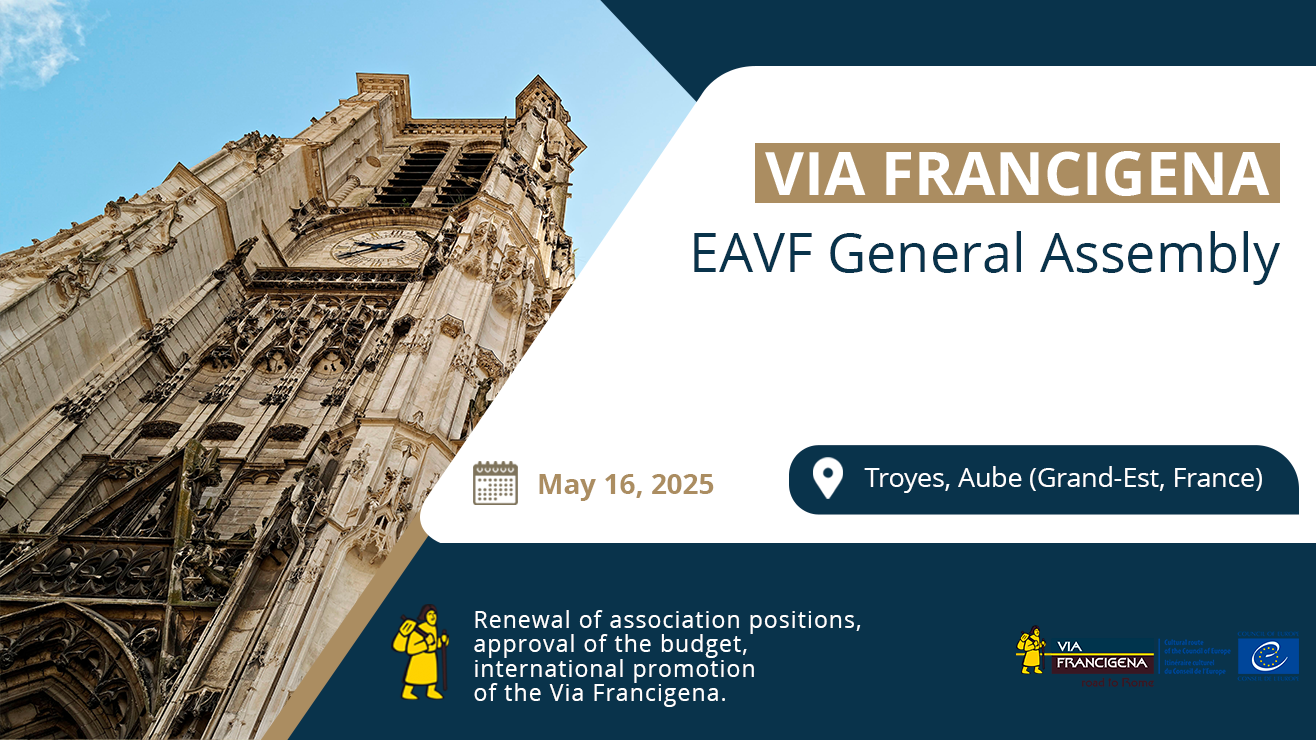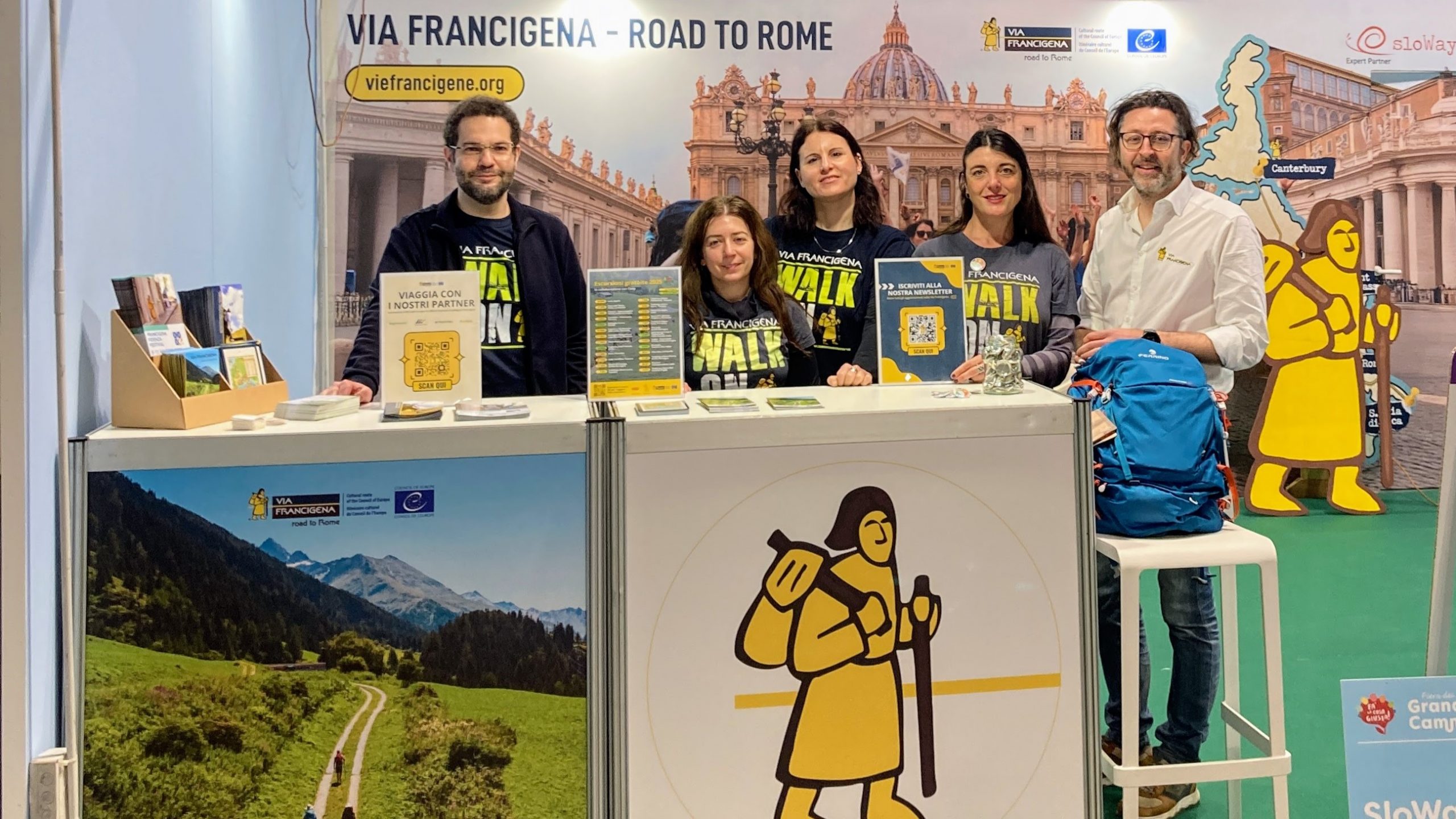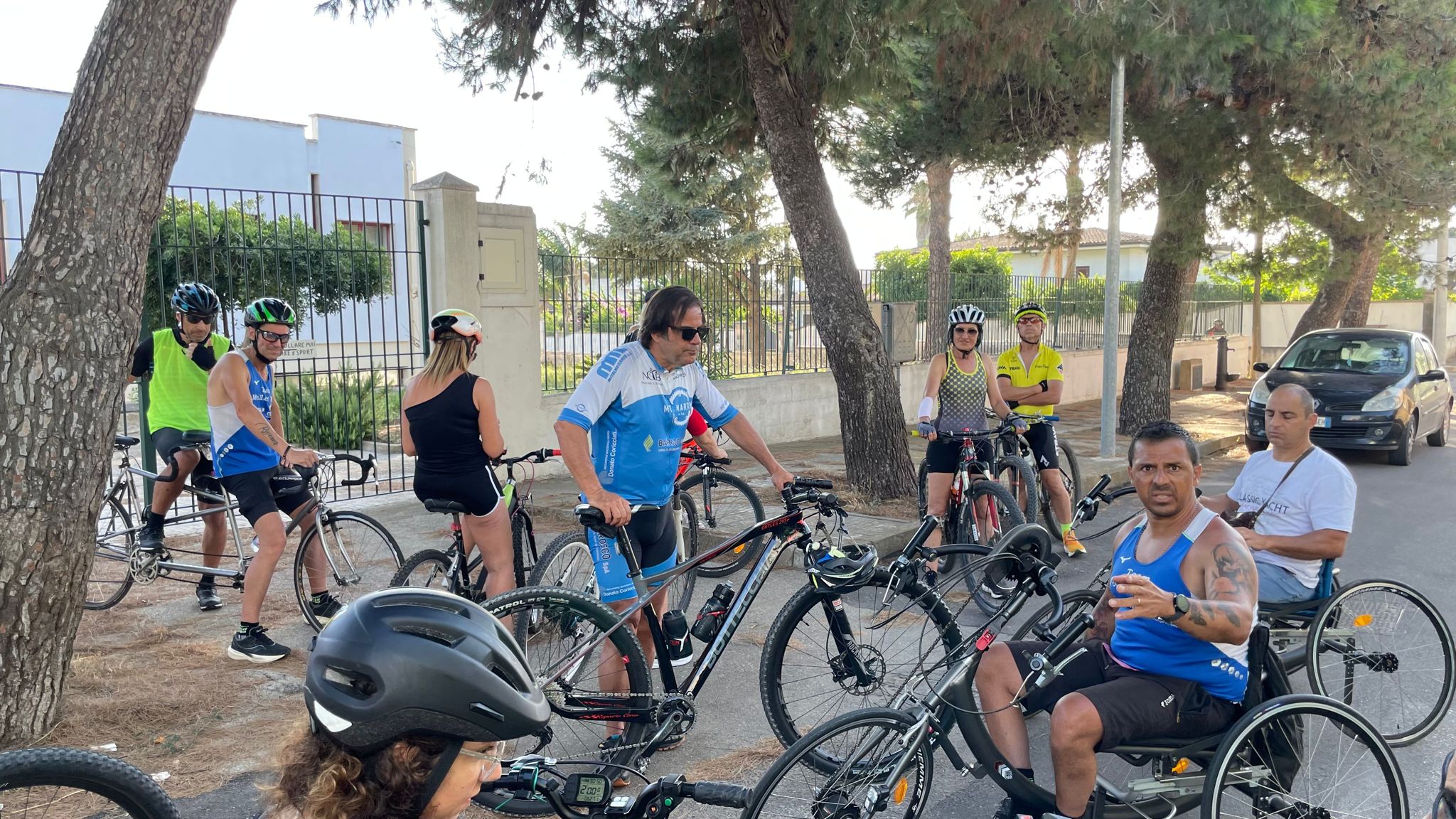“A word to the wise (is enough)” it is said: being a connoisseur or a neophyte in the field of oenology makes no difference, because by now it is well known to everyone that Barolo and Barbaresco are among the best known wines in the world from Piedmont, an Italian region devoted to the production of red wines (but not only), including Sizzano produced between Novarese and Valsesia (today a DOC wine), which according to Camillo Benso Count of Cavour could well compete with the famous Burgundy.
The wine cellars of Piedmont are all deeply tied to their territory and the centuries-old traditions that have been handed down from generation to generation among the families of producers throughout the region. However, there are wine routes that are even more peculiar because they are linked to the history of the Via Francigena route that connects Pont Saint Martin to Vercelli via Ivrea. If one of the first pieces of advice given to those embarking on the route was to stock up on water, in less recent times pilgrims preferred to quench their thirst with the ‘nectar’ of the vine, which was offered to them, since water resources could be polluted and therefore a source of disease.
Among the sentiments of those who now travel the Francigena itinerary, there is certainly no lack of curiosity to explore the local wine taste, and in the Piedmont region there is ample choice, considering that there are two wine-growing areas intertwined with the route: the Canavese area and the Val Susa vineyards, two of the four areas included in the ‘Royal Road of Turin Wines‘, recognised as a production itinerary of wine excellence in 2009 and no less than 600 km long.
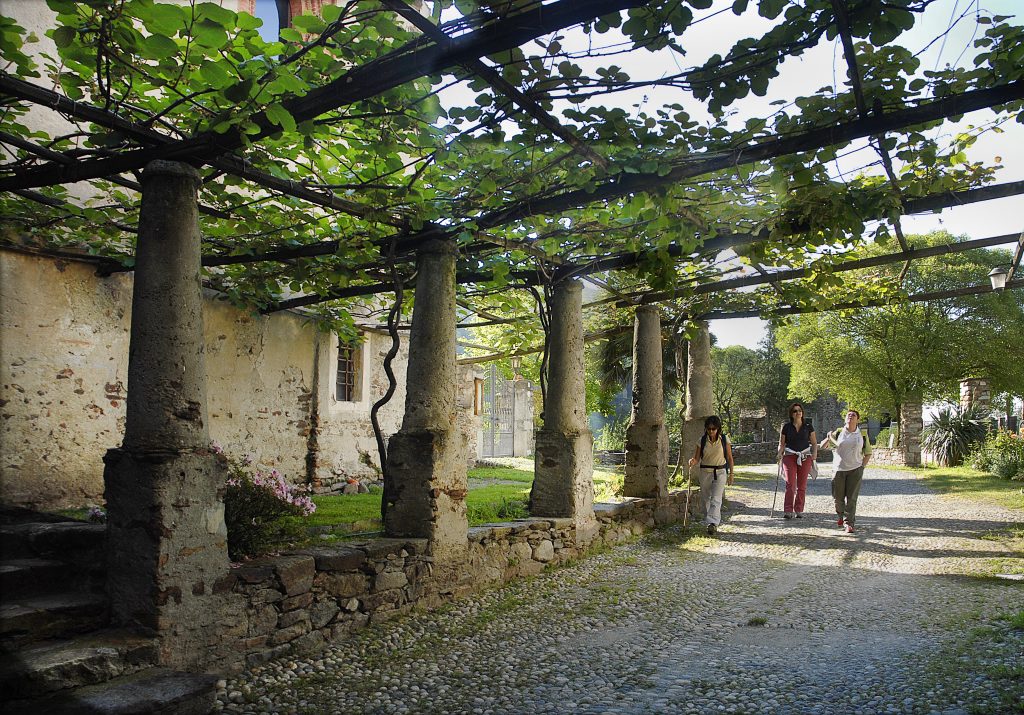
The Wine Trail in Canavese on the Via Francigena
The wine route in the Canavese region includes three interconnected itineraries, but only one runs along the ancient route of the Via Francigena, namely the one that north of Turin extends to Carema, at the gates of Valle d’Aosta. Carema became one of Italy‘s 200 Slow Food presidia in 2014, precisely because of the close link between the area and the wine from its vineyards, namely Nebbiolo. Produced by a social winery founded in 1960, it is characterised by a ‘morainic’ flavour, metaphorically speaking, since the form of Carema vine cultivation is the Canavese pergola, or locally ‘tòpia’, characterised by having the roots of the vines grow in the morainic soil supported by small walls and pillars made of river stone on steep terraces. The Canavese wine trail is in fact dominated by the moraine hill of the Serra d’Ivrea (25 km long, making it the largest in Europe), overlooked by the Alps and bordered by Lake Viverone.
Very useful for orientation and advice from those who have had first-hand experience of the area is also the AllTrails app, where maps can be consulted and information and comments exchanged. The route lends itself well to a bicycle trip, but a suggestive suggestion would be to walk along the paths between the rows of vines to discover the path. Autumn and winter are the ideal seasons for discovering the oenological flavour of the Canavese, since in addition to the spectacle of colourful landscapes, it is possible to watch the grape harvest and the processing of the grapes for raisin wine.
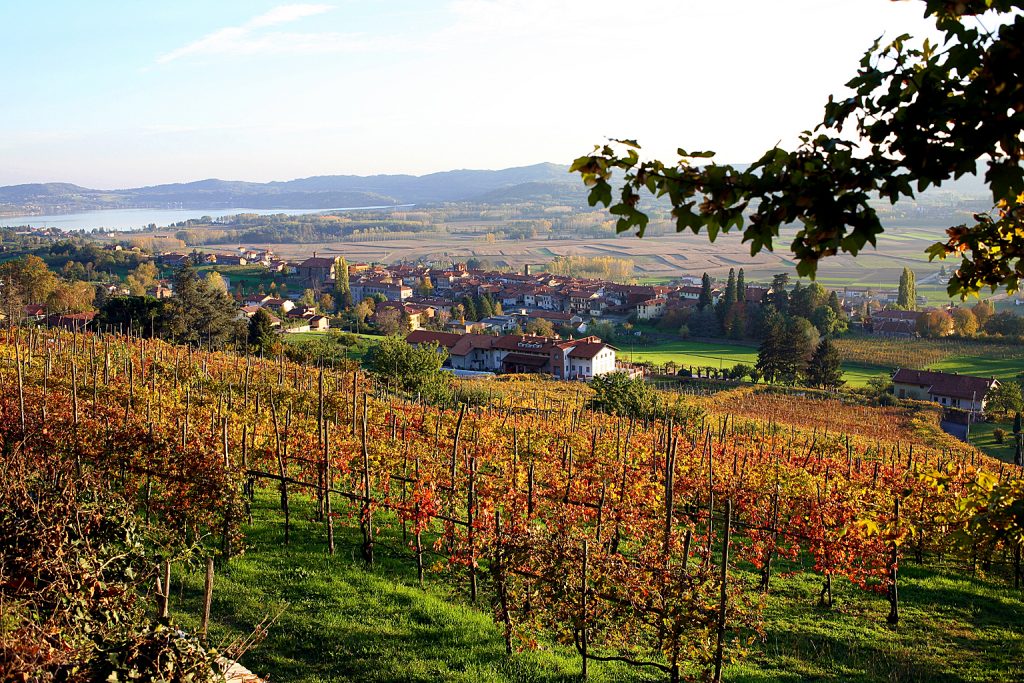
An important stop on the journey, in this land littered with vines, is the town of Caluso where one can taste Erbaluce di Caluso or Caluso DOCG, the most characteristic white wine of the Canavese area, which in 2023 was nominated by the Piedmont Region as vine of the year. This wine comes from hillside vineyards and is produced in three different types: still, sparkling and passito, characterised by a minimum alcohol content of around 11-11.5%, and to be served chilled to accompany aperitifs and hors d’oeuvres, first courses and cheeses, dry desserts and amaretti biscuits respectively.
Vineyards at ‘high altitude’ in the Susa Valley section of the route
The wineries in Val Susa are located on the two sides of the Upper Valley, Exilles and Giaglione/Chiomonte. The presence of a microclimate characterised by adequate exposure to the sun, sheltered from the effects of the cold north winds, has made it possible to cultivate vines at altitudes above 850 m, thus allowing ‘heroic viticulture‘, i.e. at unusual heights, with slopes between the rows of vines of up to 30%, where the vines grow between rocks and stone walls that store heat during the day and release it at night.
Although this area has been characterised since pre-Roman times by the culture of producing and selling wine, the importance of which is testified to in the ‘Testament of Abbone‘ of 739, founder of the Abbey of Novalesa, it was thanks to the Via Francigena, which connects this side of the Alps to France, that the development of vine cultivation was stimulated, favouring the presence of the numerous inns and taverns scattered along the route that welcomed pilgrims by offering them exclusively local wine.
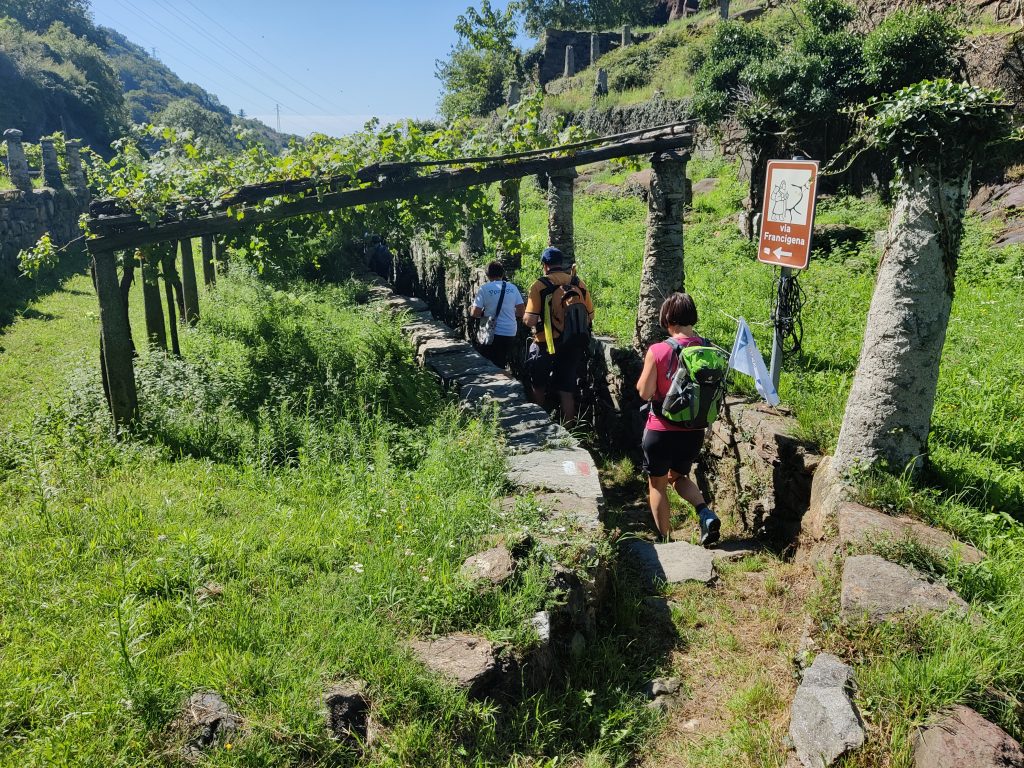
The wines from Val Susa are Baratuciat (an indigenous white grape variety and ampelographically mysterious, miraculously saved from disappearance and only entered into DOC Valsusa in 2019) and the reds Avanà and Becuet, DOC Val Susa since 1997. The ‘Vino del Ghiaccio’, eiswein or icewine, a passito also known as San Sebastiano, also originates in this area. It is produced at the highest altitudes using a procedure whereby the Avanà grapes are left to dry in the vineyard until the arrival of winter; then the bunches are harvested, strictly by hand, at night or at the crack of dawn, at a temperature of minus -8°. The crushed berries, still frozen, then generate a sugary must that exudes an aroma of wild berries; the wine is therefore excellent with cheeses and dry desserts.
Visit Piedmont, ambassador of Piedmontese wine along the way
The regional agency Visit Piemonte, set up to enhance the tourist offer and agri-food production in the Piedmont region, has created, with the collaboration of the Region, a pathway for the knowledge and dissemination, on a local scale, of wine production, using as testimonials the faces of 15 presidents of the Consorzi di Tutela dei vini di qualità certificati (D.O.C. and D.O.C.).
This activity has thus stimulated in the public a greater knowledge and curiosity towards the excellence of Piedmontese wines and thus to learn the connection of these with the culture and history of the territory of reference, as well as their connection with the Francigena itinerary, whose imagery cannot but lead walkers and tourists in a circular sense to explore the route along natural paths of colours, but also of flavours.



